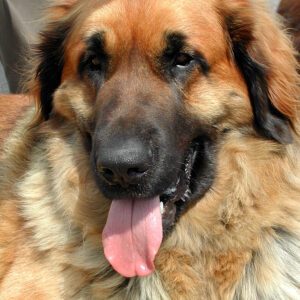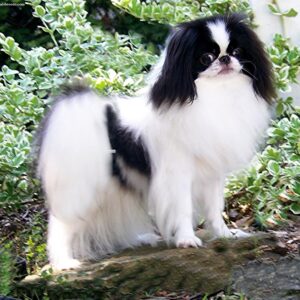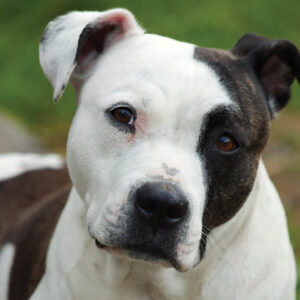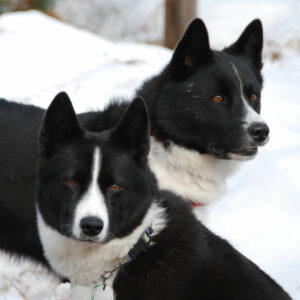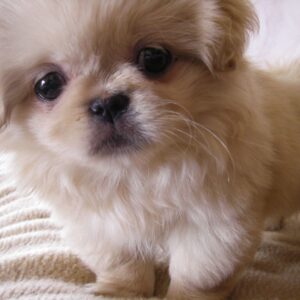There’s no way around it – Irish Wolfhounds are some of the biggest dogs around. But don’t be fooled by their size, because these gentle giants have plenty of love and loyalty to offer. Whether you’re a seasoned dog owner or a first-timer, this breed can make a fantastic addition to your family. Let’s take a closer look at the history, characteristics, and care requirements of Irish Wolfhounds, so you can make an informed decision about bringing one into your home.
History of Irish Wolfhounds
The origins of Irish Wolfhounds can be traced all the way back to ancient times. These dogs were highly prized by Celtic chieftains, who used them for hunting and as symbols of their wealth and power. In fact, so revered were these dogs that there are references to them in early Irish literature dating back more than 1,000 years. Ironically, their hunting instincts and athleticism made them highly valued by the very people who would eventually attempt to eradicate them: the British colonizers. In the 19th century, their numbers dwindled dramatically, and it wasn’t until a group of dedicated breeders worked to revive the breed that it made a comeback. Today, Irish Wolfhounds are still highly regarded for their imposing size and friendly demeanor.

These days, Irish Wolfhounds are often kept as companion animals. Due to their impressive size, they can be a great deterrent to would-be troublemakers, and their natural protectiveness makes them great watchdogs. But despite their formidable presence, these dogs are incredibly mellow and gentle. They adore their families and are generally great with kids.
Location of Origins
As their name suggests, Irish Wolfhounds hail from the Emerald Isle. They were originally bred to hunt wolves, deer, and other large game, so their size and athleticism were highly prized by Celtic warriors. In fact, these dogs were revered for their bravery and loyalty, and were often given as gifts to important guests or allies. Today, Irish Wolfhounds are still beloved in Ireland (where they are the national dog), as well as in other parts of the world.

Despite their hunting past, Irish Wolfhounds are perfectly happy living in the suburbs or city. However, because they require plenty of exercise, they will do best in a home with a large yard or access to plenty of outdoor space. These dogs love to run and play, and will need at least an hour of exercise a day to stay happy and healthy.
Characteristics of Irish Wolfhounds
Irish Wolfhounds are, quite simply, massive. These dogs can weigh over 100 pounds and stand upwards of three feet tall at the shoulder. Despite their size, however, they are gentle and sweet-tempered. They are also highly intelligent, which can make them a pleasure to train. However, because of their sheer bulk, they can be a bit clumsy at times. So, be prepared for the occasional overturned piece of furniture or broken knickknack.
Some of the other characteristics you can expect from an Irish Wolfhound include:
- A long, narrow head with a pointed snout
- Soft, medium-length fur that ranges in color from white to brindle to dark gray
- Large, floppy ears that stand up when they’re alert
- A wide chest and muscular legs
When it comes to temperament, Irish Wolfhounds are often described as “gentle giants.” These dogs are incredibly loyal and affectionate, and will bond closely with their families. They are generally great with kids and other animals, although they can be a bit wary of strangers.
Choosing the Best Foods for Irish Wolfhounds
When it comes to feeding your Irish Wolfhound, it’s important to choose a high-quality dog food that meets their specific nutritional needs. Because these dogs grow so quickly and can eventually weigh over 100 pounds, you’ll want to opt for a food that is high in protein and low in calories. It’s also important to pay attention to the fat content, as too much fat can lead to obesity and related health issues.
When selecting a dog food for your Irish Wolfhound, consider brands that offer formulas specifically designed for large breeds. These foods will typically have a lower calorie count and higher levels of glucosamine and chondroitin, which can support joint health. Additionally, some owners opt to supplement their dog’s diet with fish oil or other omega-3 fatty acids, which can help to support a healthy coat and skin.

As with any dog, it’s important to offer your Irish Wolfhound plenty of fresh, clean water at all times. These dogs are often quite active, so it’s important that they stay hydrated. You can also supplement their diet with healthy snacks like carrots or apples, which can help to keep them trim and satisfied between meals.
Training Your Irish Wolfhound
Irish Wolfhounds are typically very intelligent and responsive to training. However, due to their large size, it’s important to start training early to ensure they can be safely controlled. Socialization is also key, as these dogs can be wary of strangers and other animals if they haven’t been properly socialized.
When training your Irish Wolfhound, it’s important to be firm and consistent. These dogs respond best to positive reinforcement techniques like treats and praise. They are sensitive animals, so it’s important to avoid resorting to harsh or punitive training methods.
Along with basic obedience training, many Irish Wolfhound owners opt to enroll their dogs in agility classes or other activities that allow them to exercise their natural instincts. These dogs love to run and play, so keeping them physically and mentally stimulated is key to their overall health and wellbeing.
Taking Care of Your Irish Wolfhound
When it comes to grooming, Irish Wolfhounds are relatively low maintenance. Because their fur is short and soft, they won’t require frequent trips to the groomer. However, they do shed seasonally, so be prepared to invest in a good lint roller. Brushing your dog regularly (ideally once a week) can also help to keep their coat shiny and healthy.
Because Irish Wolfhounds are such large dogs, they can be prone to certain health issues like hip dysplasia and bloat. To help prevent these conditions, it’s important to ensure your dog stays at a healthy weight. Feeding them a nutritious diet and providing plenty of exercise can go a long way toward keeping them healthy and happy.
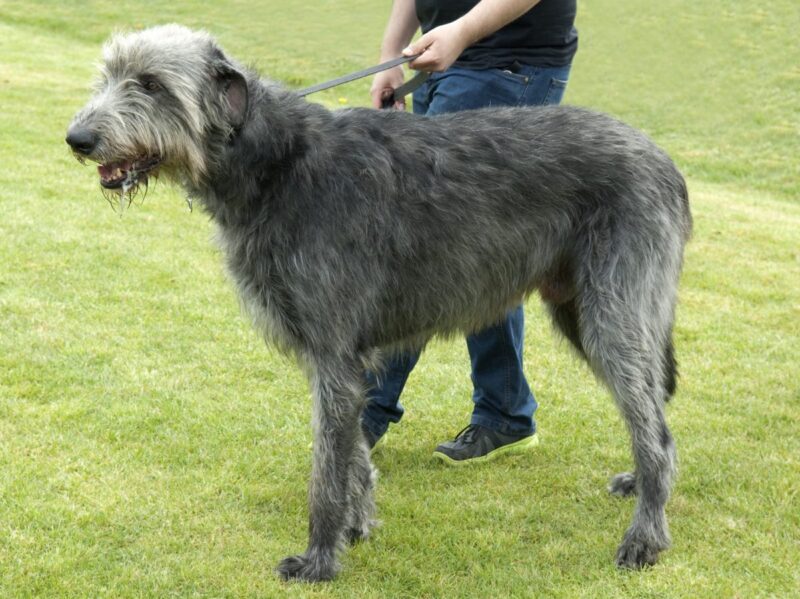
Along with regular veterinary care, you’ll want to keep an eye on your Irish Wolfhound’s coat, teeth, and nails. Brush their teeth regularly to prevent dental issues, and trim their nails as needed to prevent them from becoming too long and causing discomfort. Finally, because these dogs are so large, it’s important to invest in a sturdy collar and leash – this will help ensure you can safely control them on walks and other outings.
FAQs
Are Irish Wolfhounds good with kids?
Yes, Irish Wolfhounds are great with kids! They are gentle and patient, and enjoy nothing more than spending time with their families.
Do Irish Wolfhounds require a lot of exercise?
Yes, Irish Wolfhounds need plenty of exercise to maintain their health and wellbeing. Plan on giving them at least an hour of exercise a day.
Are Irish Wolfhounds difficult to train?
No, Irish Wolfhounds are typically quite intelligent and responsive to training. However, it’s important to start training early and be consistent and firm.
Conclusion
Irish Wolfhounds are truly majestic animals – from their towering size to their gentle temperament, they embody the best of both worlds. If you’re looking for a loyal, affectionate companion who will protect and adore your family, this breed might be just what you need. Remember to choose a high-quality dog food, invest in plenty of exercise and training, and keep up with your dog’s grooming and healthcare needs. And, of course, enjoy all the love and companionship that your Irish Wolfhound has to offer!

